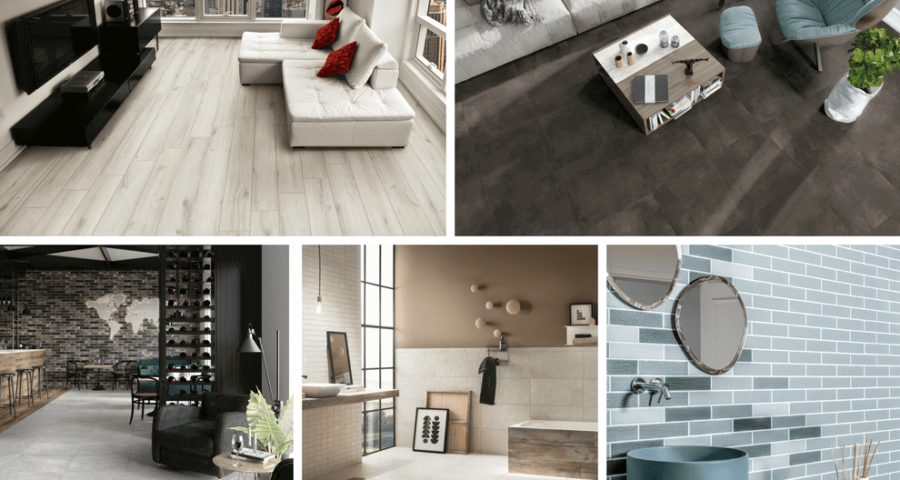
Floor Tiles for Your Home
Flooring is a fundamental aspect of any home’s interior design. Not only does it play a crucial role in enhancing the aesthetic appeal of your space, but it also contributes to the overall functionality and durability of your house. When it comes to choosing the best floor tiles for different rooms and areas, there are several factors to consider. In this article, we will provide you with expert advice and tips to help you make an informed decision that meets your requirements and personal style.
Things to consider before selecting floor tiles for a specific room in your home:
1. Assess the Room’s Functionality: Before selecting floor tiles, it’s essential to consider the purpose of the room. Different areas of your house have varying needs. For instance, high-traffic areas like the kitchen and entryways require tiles that can withstand frequent foot traffic and are easy to clean. On the other hand, bedrooms and living rooms may prioritize comfort and warmth.
2. Consider Durability: Durability is crucial, especially in areas prone to moisture and spills. For bathrooms and kitchens, opt for tiles that are resistant to moisture and stains, such as ceramic or porcelain tiles. In high-traffic areas like hallways or foyers, choose tiles that are scratch-resistant and can withstand heavy use.
3. Style and Aesthetics: The right floor tiles can significantly enhance the visual appeal of your home. Consider the overall style and theme of your house when selecting tiles. For a modern, sleek look, consider large-format tiles with minimalistic patterns. Alternatively, if you prefer a more rustic or traditional style, opt for natural stone tiles or wood-look tiles.
4. Maintenance: It’s important to choose floor tiles that are easy to clean and maintain. Some tiles require regular sealing, while others may be more resistant to stains and dirt. Consider your lifestyle and available time for maintenance when making your selection.
5. Safety: Safety should always be a priority, especially if you have young children or elderly family members. Look for floor tiles that offer slip resistance and are suitable for the room’s purpose. Textured or matte finishes can provide better traction in wet areas like bathrooms.
6. Budget Considerations: Set a budget before you start looking for floor tiles. Prices can vary significantly depending on the material, size, and design. Consider the long-term value and durability of the tiles to ensure you make the best investment for your home.
7. Seek Professional Advice: If you’re unsure about which tiles to choose or need assistance with installation, don’t hesitate to consult with professionals. They can provide expert guidance based on your specific needs and preferences.
In conclusion, choosing the best floor tiles for different rooms and areas in your house requires careful consideration of factors such as functionality, durability, style, maintenance, safety, and budget. By following these expert tips, you can make an informed decision that not only adds beauty and style to your home but also ensures long-lasting durability and functionality.
Remember, your floor tiles are an investment that should stand the test of time while reflecting your personal taste and lifestyle. Choose wisely, and enjoy the beauty and comfort that your carefully selected floor tiles will bring to your home for years to come.

Best Floor Tiles and Mats for Different Rooms and Areas
- Entryway and Hallways: Porcelain, ceramic, or natural stone tiles are ideal because they handle heavy foot traffic, resist wear, and create a welcoming aesthetic; rubber mats can add extra grip and protect the flooring.
- Living Room: Porcelain, ceramic, or wood-look tiles work well as they offer durability, low maintenance, and can complement various interior designs; rubber mats can be used to prevent slipping and add cushioning in high-traffic spots.
- Kitchen: Porcelain, ceramic, or vinyl tiles are excellent choices due to their stain resistance, durability, and ability to withstand spills and heavy use; rubber anti-fatigue mats can improve comfort for long periods of standing.
- Bathroom: Porcelain, ceramic, or natural stone tiles are best because they are water-resistant, slip-resistant, and easy to clean; rubber mats are ideal for providing extra safety in wet areas.
- Bedroom: Ceramic, porcelain, or carpet tiles are suitable for creating a cozy, comfortable atmosphere that matches the room’s décor; rubber mats can be placed near beds for added warmth and grip.
- Outdoor Areas (Patio or Balcony): Natural stone, terracotta, or unglazed porcelain tiles are perfect as they withstand weather changes, UV exposure, and provide a slip-resistant surface; durable rubber mats can enhance safety and protect tiles.
- Laundry Room: Porcelain or ceramic tiles are ideal because they are water-resistant, durable, and easy to maintain in a functional space; rubber mats can help reduce slipping and protect tiles from heavy appliances.





